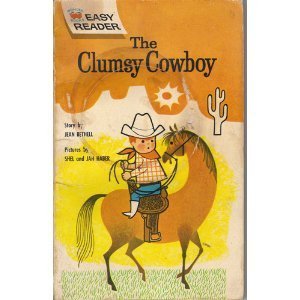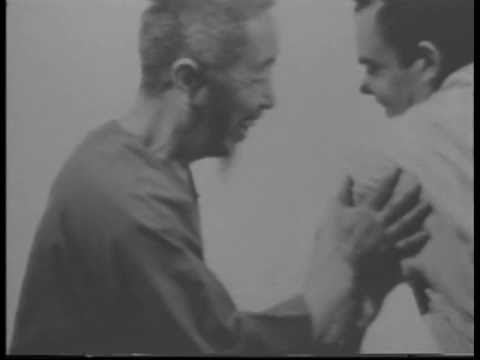Timing Isn’t Everything
/Every martial artist has heard the expression, ‘Timing is everything!’ I’d like to discuss how people come to this conclusion and why it might be an error.
I recently read the book Antifragile by Nassim Taleb
, and while I believe he makes the enormous error of deciding what his preferences are in advance and then attempting to use his theory to justify them, the book none-the-less got me to think about a wide range of subjects and for that I am deeply grateful.
Before we set off on our journey, here is a measurement primer in case you want to check my results.
One of the things I’ve been thinking about is the importance of speed in martial arts. If we graph velocity relative to harm on an x/y axis we get an ‘S’ shape. At the bottom we of the ‘S’ we see almost no harm as velocity increases along the horizontal axis until a critical velocity is reached and then we see harm rising very fast until we get to incapacity and death which causes harm on the vertical axis of the graph to level out rather abruptly. You can’t be more harmed than dead.
 Harm (vertical axis) as a function of Speed (horizontal axis)The reason for this ‘S’ shape is in the equation for kinetic energy which is: half the mass times velocity squared, (0.5)mv². Because velocity is squared this formula gives us an upward moving curve of ever increasing steepness. But the beginning of the curve doesn’t increase very fast at all. That’s why if you want to make practically any martial arts technique safer you can easily remove most of the kinetic energy simply by slowing it down.
Harm (vertical axis) as a function of Speed (horizontal axis)The reason for this ‘S’ shape is in the equation for kinetic energy which is: half the mass times velocity squared, (0.5)mv². Because velocity is squared this formula gives us an upward moving curve of ever increasing steepness. But the beginning of the curve doesn’t increase very fast at all. That’s why if you want to make practically any martial arts technique safer you can easily remove most of the kinetic energy simply by slowing it down.
In fact, this reveals a large vulnerability. If a given punch has just enough force to do me serious damage, and I can some how slow that punch down just a small amount I may be able to take away most of its kinetic energy, making it impotent. A small change creating a big effect.
This is why timing is so important; without proper timing kinetic energy disappears. It is also why techniques which compromise speed are generally inferior. This leads to some interesting consideration if you practice internal martial arts slowly which we will deal with below, but first let’s look at the other part of the equation: the constant.
 In the equation mv² the m for mass is generally assumed to be a constant. We can see this in the equation for momentum which is: mass times velocity, mv. If we graph mv on an x/y axis we get a straight diagonal line, not a curve. Momentum is always measured as a vector force, meaning it has a direction. Kinetic energy is measured in joules and refers to the energy released on contact, it is not a directional reference. In the equation for momentum, if I increase the mass a small amount for any given velocity, the result is simply a small increase in momentum. This is called a direct ratio.
In the equation mv² the m for mass is generally assumed to be a constant. We can see this in the equation for momentum which is: mass times velocity, mv. If we graph mv on an x/y axis we get a straight diagonal line, not a curve. Momentum is always measured as a vector force, meaning it has a direction. Kinetic energy is measured in joules and refers to the energy released on contact, it is not a directional reference. In the equation for momentum, if I increase the mass a small amount for any given velocity, the result is simply a small increase in momentum. This is called a direct ratio.
The (obvious?) implication of this is that the person with larger mass usually wins! Big guys hit that critical steep part of the harm curve at slower velocities. They also have more potential energy from the combination of weight and gravity just waiting to drop on you at any moment.
There are important exceptions like blades and vulnerable areas. It doesn’t take very much kinetic energy to poke out an eye, so as long as the finger gets to the eye (position) it can do damage. Very sharp blades act on tiny surface areas allowing very small amounts of velocity to do catastrophic amounts of damage. Likewise the fast speeds attainable by the business end of a club can easily trump larger mass.
Slow martial arts practice is usually very safe. But this doesn’t mean that the mind should become sedate. When we practice Taijiquan or other slow forms practices we must not give up our ability to move at maximum speed. This means that no matter how quiet your body gets in motion, your mind must be totally spatially active. During Tai Chi practice you must be able to jump away instantly in any direction as if your clothes were on fire! It is the same thing with push hands, just because you can move slowly doesn’t mean you have given up the option to move at lightning speed. In fact, to compromise your ability to move fast is a fatal error (it is described in the Tai Chi Classics as a form of “stagnation” which results from directing the qi to lead the body).
So perhaps readers are thinking, bummer, I thought martial arts would give me some advantage over people bigger than me. Don’t despair. Large is of course relative but most large people have less incentive to improve their structure or their ability to attack with whole body liquid mass. Why? Because they can usually win with lousy technique. For this reason being large can be a vulnerability. If you have a mechanism for increasing your smaller mass or decreasing your opponent’s larger mass, you have a way to gain advantage.
No, I don’t mean eating more fatty foods. The way to increase mass is to practice using your entire mass in all your movements. The way all internal martial arts are designed to do. This is a very “anti-fragile” way to practice because if you are good at keeping all of your mass functioning as a liquid unit you have dramatically reduced your vulnerability to changes in timing!
And as everyone already knows, when fighting a dragon, cut off their tail first, then a wing, then go for a leg...or in martial arts terms use your whole body mass to attack their disconnected (lack of whole body liquid mass) arm, leg, or head. Even a 400 pound man does not have an arm as thick as my torso.
So, in conclusion, reliance on timing creates a vulnerability. Methods which give up speed usually sacrifice kinetic energy too. Internal martial arts train the body to be totally quiet and the mind totally active so that maximum speed is available at all times. One of the primary reasons for training slowly is to practice mobilizing whole body liquid mass effectively bring much larger amounts of mass to the fight then is normally possible, thus creating the opportunity to defeat larger opponents.






